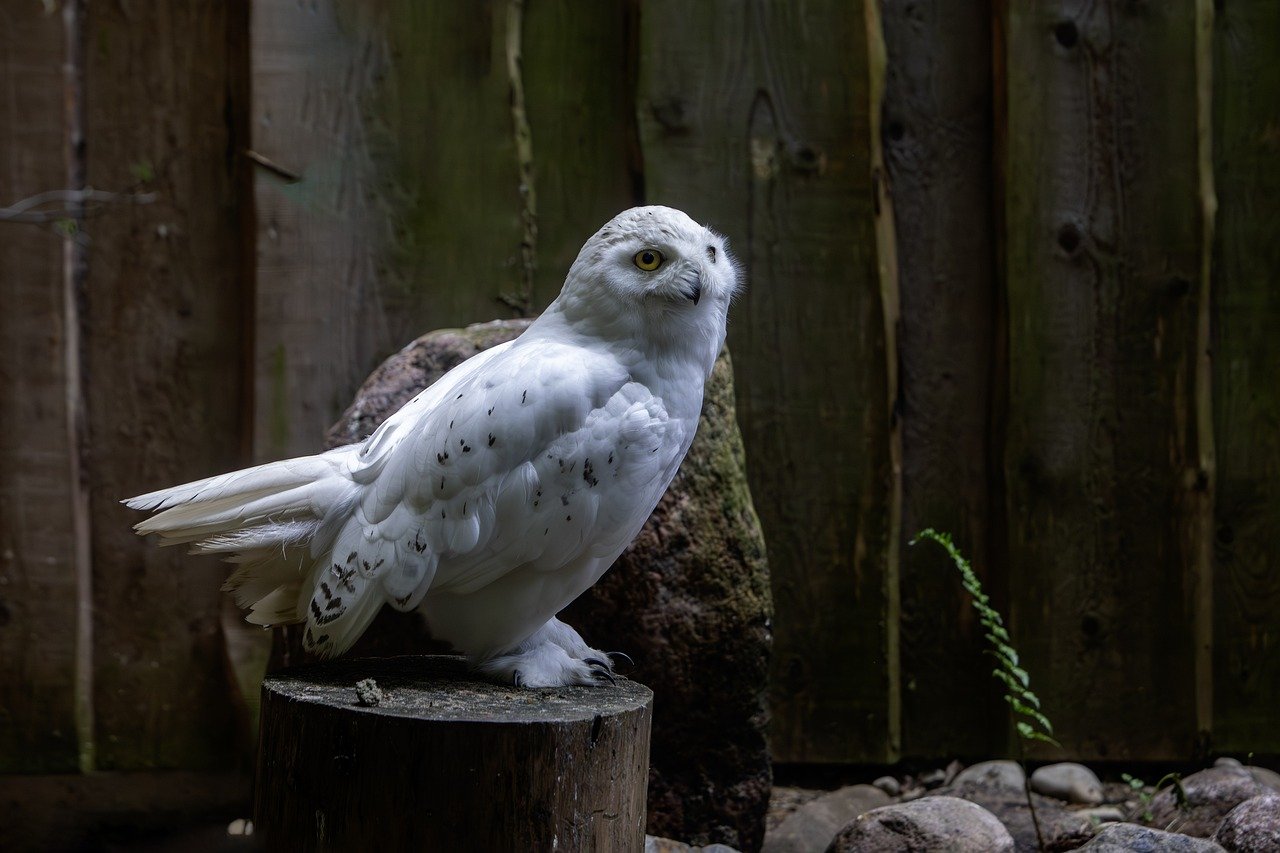The snowy owl (Bubo scandiacus) is a magnificent and iconic bird species known for its striking appearance and Arctic habitat. Here are some key features and characteristics of the snowy owl:
- Appearance: Snowy owls are one of the largest owl species in the world, with a wingspan that can reach up to 5 feet (1.5 meters) in length. They have distinctive white plumage that helps them blend in with their snowy surroundings in the Arctic tundra. Both males and females have white feathers, but males typically have more markings and barring on their plumage. They also have bright yellow eyes and a black beak.
- Habitat: Snowy owls are native to the Arctic regions of North America, Europe, and Asia. During the breeding season, they inhabit open tundra habitats, including coastal areas, grasslands, and marshes. In winter, they may migrate southward to more temperate regions, where they can be found in fields, dunes, and other open habitats.
- Behavior: Snowy owls are primarily diurnal hunters, meaning they are active during the day, especially during the Arctic summer when daylight is continuous. They hunt primarily by sitting and waiting for prey to come within striking distance, using their keen eyesight and excellent hearing to locate prey such as lemmings, voles, and other small mammals.
- Migration: Snowy owls are known for their periodic irruptions, which are irregular migrations southward from their Arctic breeding grounds. Irruptions occur in response to fluctuations in prey populations, with large numbers of owls moving into more southern areas in search of food. These movements can sometimes result in snowy owls being observed in unexpected locations, including urban areas.
- Reproduction: Snowy owls typically nest on the ground, using elevated sites such as mounds, rocks, or even old nests of other birds. Females lay a clutch of eggs, usually ranging from 3 to 11 eggs, depending on prey availability. Both parents participate in incubating the eggs and caring for the young.
- Conservation: While snowy owls are not currently considered globally threatened, they face several conservation challenges, including habitat loss, climate change, and disturbances to their breeding and wintering areas. Conservation efforts aimed at preserving their Arctic breeding grounds and protecting key wintering habitats are essential for ensuring the long-term survival of this iconic species.
Overall, the snowy owl is a majestic bird of the Arctic, admired for its beauty, adaptability, and unique ecological role in northern ecosystems.
Visited 942 times, 2 visit(s) today
Views: 1427
Subscribe to the newsletter:
